
WORDS : Andrew Ho | Photos : Andrew Ho / Kawasaki Malaysia | [email protected]
In 2007, Kawasaki rocked the middleweight streetbike segment with Versys, a bike versatile enough for all kinds of on-road riding, namely – commuting, touring, canyon carving and not to forget the occasional track days. In 2010 Kawasaki introduced 2nd generation Versys with slightly updated styling and rubber bits on footpegs and rear engine mounting in attempt to reduce the buzzing vibration that is common for a parallel twin engine, but still retaining the same successful bike under the covers.
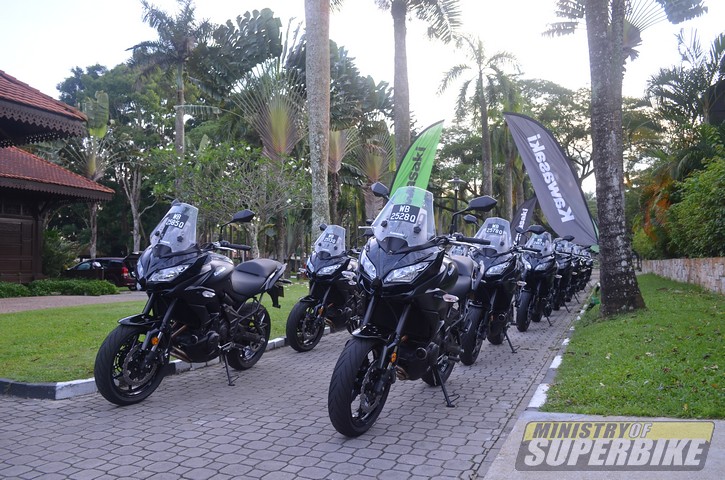
Third time’s a charm, so an old idiom goes. The 2015 Kawasaki Versys 650, a 3rd generation revision of the model has brought along multiple changes and improvements, short of introducing a totally new motorcycle, if compared to the 1st generation model. This new Versys has now reached local dealers nationwide and Ministry Of Superbike was invited to the Media Press Introduction organized by Kawasaki Motors Malaysia from 14th to 16th June 2015 in Pulai Springs Resort, Johor to preview and test ride the new incarnation of the most popular Kawasaki streetbike sold in Malaysia. As an owner of the 2nd generation Versys myself, this review will look into every updates and improvements introduced by Kawasaki and how it compares to the outgoing model it is replacing.
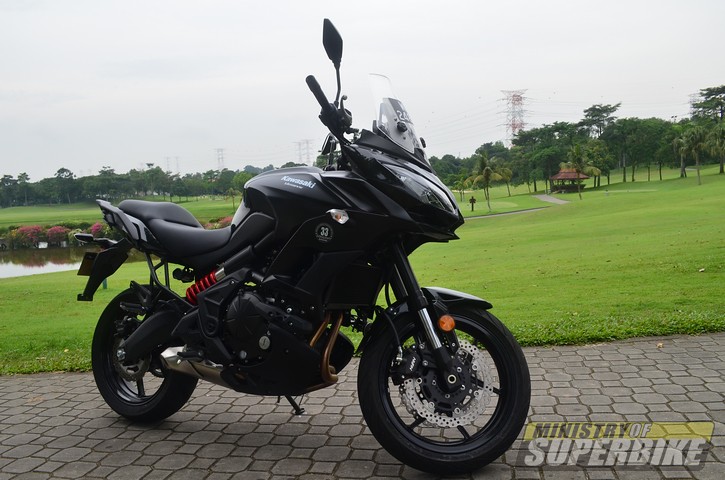
The very first change one would immediately notice on the 2015 Versys, is the “looks”. Characterized by the shape of the headlamps, the dual-stacked head lamp of the 1st and 2nd generation Versys is a hit-and-miss affair. Either you love it or you hate it. Yet as odd looking as it may be, the stacked headlamp provided solid functionality without complaints. On the 3rd generation, Kawasaki has decided to streamline its product identity and adopted the common ninja family twin headlamps. This configuration projected a sportier and aggressive “look” and would finally change fence sitters’ decision who previously held back buying a Versys simply because of disagreeing with its “looks”. This new configuration too allows mounting a wider body fairing, as compared to previous generation, which translates to improved wind protection to the rider, similar to a faired sportsbike. This is a plus for those who lives and rides in cold and temperate weather countries where wind chill effect usually takes a toll on riders. However riding in tropical Malaysia, this will also mean riders get less wind to cool off their body. Rider should also take note that the heat blown back from the radiator fan is hot enough to cause discomfort on rider’s knee and shin over long periods of riding.
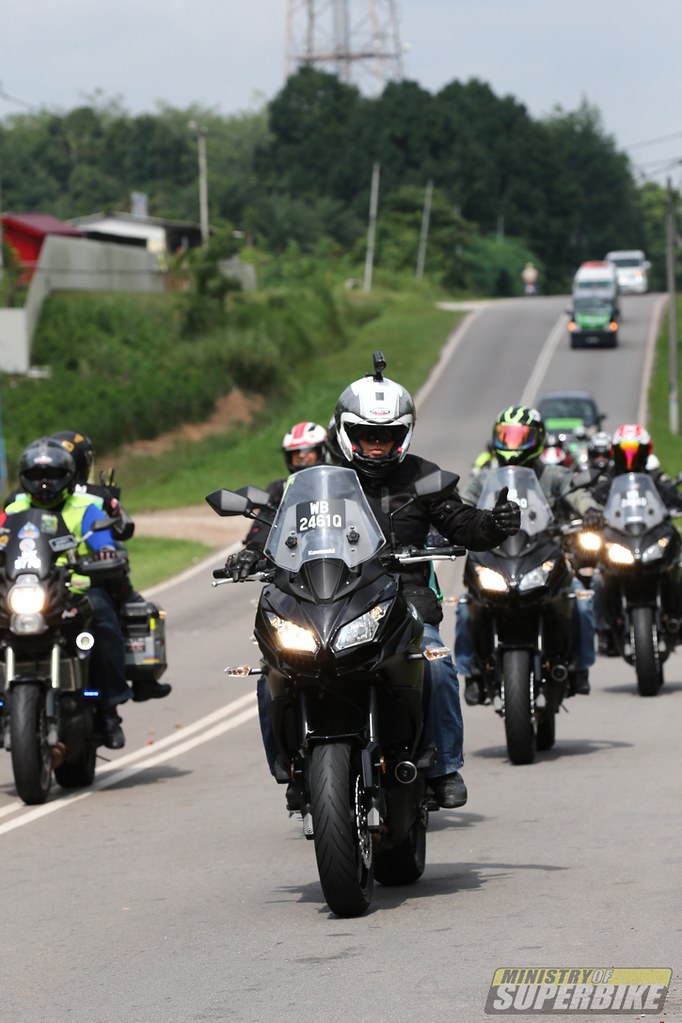
The revised windshield is taken straight off from its bigger brother, the Versys 1000. This is definitely a welcome update as the small bikini windshield on previous gen Versys is practically useless. This new windshield is remarkably taller, wider and conforms to the lines of the new head faring and works well enough that aftermarket windshield is no longer a must-have replacement unlike the outgoing model. With 2 screw knobs at the front of the windshield, the height adjustment of the windshield is an easy task to complete without the need for any tool, except your fingers. Just unscrew, slide the screen up and down to desired height and tighten back. Set it at its highest point and it shall be protective enough for majority of Asian sized riders.
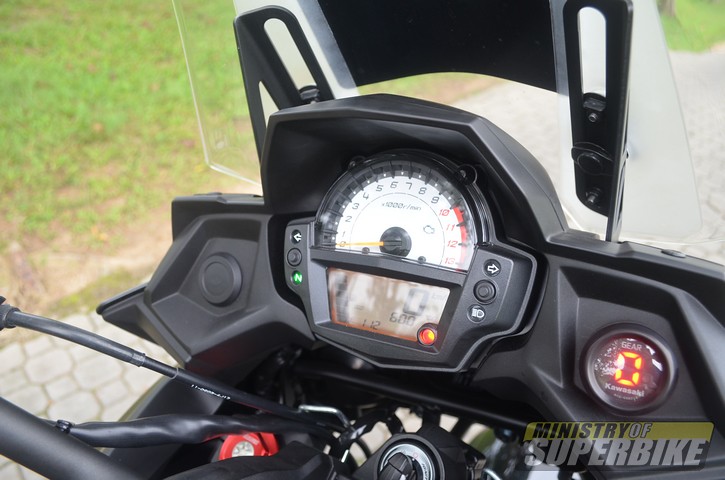
Kawasaki had opted to incorporate the same speedometer from 2012 ER6n. It is interesting to note that Eco-ride indicator, a feature first introduced in 2012 ER6n to show rider that they are riding in the fuel efficient engine RPM range, is made available to this new Versy as well. This speedometer is pretty compact and relatively small on the now enlarged dash panel. Positioned right on middle and top part of the dashboard, Kawasaki achieved a symmetrical look that is both pleasing to the eye and allows unobstructed view of the speedometer without diverting rider’s attention away from the road ahead. Accessory ports are pre-made onto both sides of the speedometer, as in Kawasaki’s optional offering, to hold a gear indicator and an electrical socket outlet. However owners have the freedom of mounting any aftermarket accessories as they deem fit on the available space – such as voltmeter, thermometer, GPS device or even action cameras.
Further revisions paid attention towards improving riding experience. First to notice when climbing onto the seat, is that seat padding feels much more comfortable and softer. In previous generation, rider’s seat is sloped forward, allowing slight forward lean to accommodate sporty riding, however there has been complaints of butt sore over extended saddle time. We were told that thicker foams are now used and rider’s seat is slightly flattened to allow a wider butt support surface for the long haul. Kawasaki informed that the thicker foam resulted in 5 mm increase on seat height, complementing this is a lowered and slightly forwarded footpeg position, to allow more legroom by increasing the distance from butt to foot. However, yours truly hardly felt any difference with these changes. Straddling on it for a few hours of ride, I felt right at home. In control. No awkward feeling at all. The change ergonomics is not felt at all, but I have to stress that previous model versys is already a comfortable and capable tourer by itself and these minor update will not give drastic change, if at all.
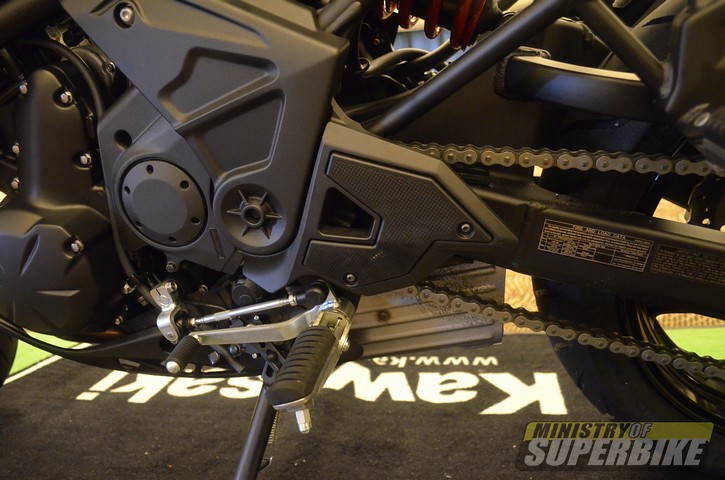
On a side note, the footpeg bracket previously made of one-piece cast aluminum is now replaced with molded alloy plate. The heel guard on the aluminium cast usually shows signs of scrubbed off paint due to constant rubbing between rider’s boots and the heel guard, but in this revised bracket, the heel guard is now covered by a piece of plastic cover, thus solving the problem of unsightly scrubbed off paint mark on the heel guard.
Next up is reshaped and enlarged fuel tank. At 19 litres capacity on the previous model, owners reported range of between 300km to 400km per tankful (varies due to riding style). Currently with an additional 2 litres increase to a total of 21 litres it is expected to add at least another 40km to 60 km travelling distance. Good for the long haul with less stops for fuel that always delay travelling time. Further, the tank is now shaped much flatter and wider in front of rider. This allows rider to put on a small tank bag securely when it wasn’t possible on the outgoing model. Personally I find the flat surface on the tank a welcome support for my tummy and upper body where I can comfortably lay on the tank ala supersports tuck, hiding behind the windshield fully protected from wind and turbulence while blasting at high cruising speed down the straight PLUS highway.
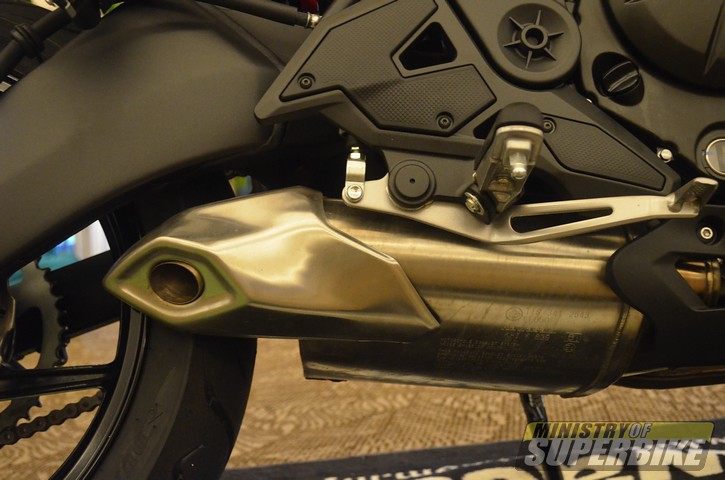
Another feature that was imported from 2012 ER6n is the single–piece construction of the exhaust system. In previous generations, the exhaust system consisted of 2 pieces, namely the exhaust header pipes and the exhaust box located beneath the engine. This easily allows previous owners to take off the exhaust box and replace it with any slip-on exhaust of their choice. The reason for this change, according to Kawasaki is to allow higher engine output, which we will explain shortly. This new exhaust is situated further hidden below the engine compared to previous generation, with a quick glance we have also noticed that the exhaust end cap is now welded directly onto the exhaust box itself, securing the end cap against dropping off which happens quite a lot with 2nd generation Versys.
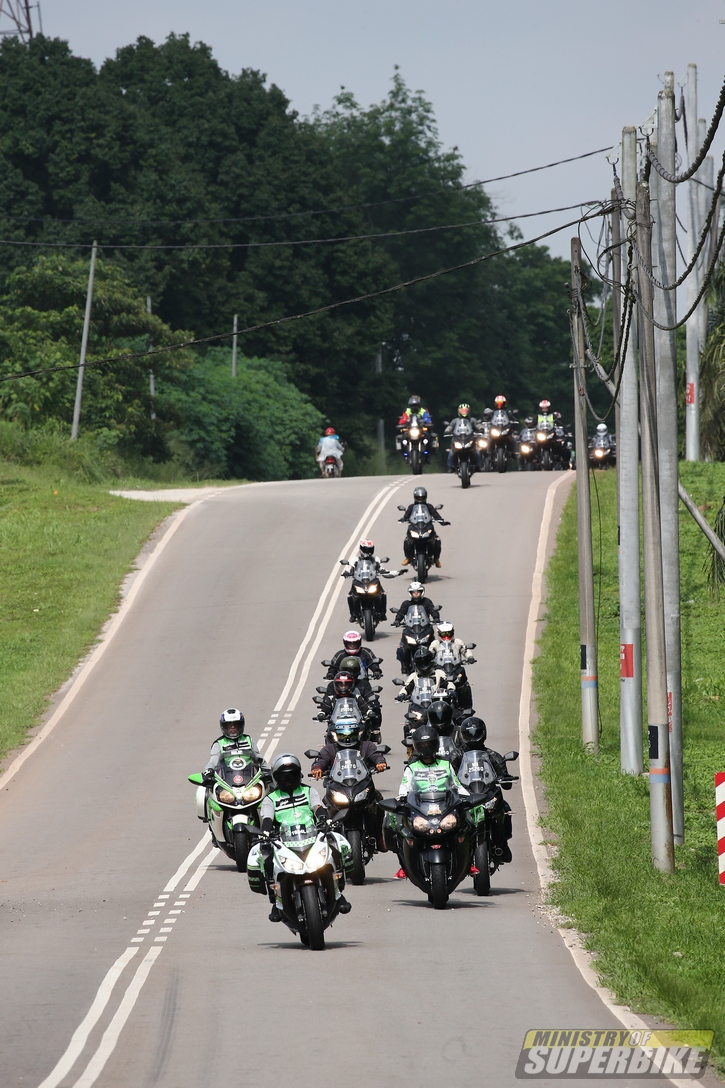
In the engine department, Kawasaki claimed to have slightly revised its cam setting and retuned the ECU to deliver power increase of 9hp and 7Nm, at 59 max hp and 64Nm max torque compared to the outgoing model. The difference is noticeable, where previously the 2nd generation Versys would run out of pull after crossing 8k rpm mark, in this new Versys it just keeps on going and flat out only after hitting 9k rpm. Kudos to Kawasaki to have provided such improved power right out from factory, whereby in earlier generations of Versys, these figures can only be achieved with aftermarket air filter, slip-on exhaust and a dyno tune. Despite the increased figures, power delivery seemed to have mellowed down for me. I am not saying that it is bad, in fact, this new Versys power delivery is pretty smooth and straightly linear. Kind of imitating the power delivery of a street-tuned inline-4 engine. Predictable, easily modulated and controlled, which will not catch newbies off-guard while making it a very easy bike to ride for the more experienced. Unlike in previous model power delivery is focused more on lower RPM range between 3k to 7k, giving a slightly bell-shaped torque curve, in current tune, the engine torque line is flat all the way from the start to redline. Some may like it, some may not, but not many riders out there would find it an issue, so it is all good. This newly increased engine output is good enough that owners no longer have a need to change to an aftermarket exhaust to get that extra bit of oomph.

Along with increasing the engine output, Kawasaki has also enhanced the brakes. New Nissin brake calipers replaced Tokico calipers for both front and rear brakes. The rear brake disc diameter has been increased 10mm to allow better stopping power. This is an improvement by a great margin. It is common knowledge that the stock brakes on previous generations lacks initial bite, feel and modulation. Rider have to squeeze hard and strong to engage the front brake especially. With this new brake setup, braking now provided better feel, feedback and instilled higher confidence in late braking. You just have to try it yourself comparing the stock brakes of both generations and you will agree with me that the new brakes has improved by leaps and bounds. Nevertheless Kawasaki Malaysia is dropping hints that they will consider introducing ABS model some time next year, although we have nothing concrete on it yet.
Buzzing vibration is common occurrence with all in-line twin engines regardless of make and Kawasaki’s EX650 engine is no exception. When 2010 facelift were introduced, Kawasaki incorporated shock absorbing rubber dampers on the rear engine mount and also rubber layers on the footpegs in attempt to isolate engine vibration. Apparently it was not enough as during high-rpm operations, the buzz can still be felt. For 2015 facelift, Kawasaki went all-out by revising the front engine mounting point on the main frame to accommodate rubber dampers on top of the existing rubber damped rear engine mount. You can say that the engine is now partially suspended on rubber dampers all around. The handlebar holder, where previously a rigid, one-piece hollow aluminium is now replaced with conventional 2 piece holder, each side with a thick rubber damper mounted underneath. Rider footpeg bracket mount is also revised to incorporate rubber dampers where it is mounted to the main frame. These rubber dampers allowed some flex movement on the handlebars and footpegs where it was rigid in previous generation, but rest assured that these changes do not compromise the bike’s safe operation. In fact I did not even feel the flex while riding, except when stationary and we were checking out the bike in detail.

The result of all these additional rubber bits? Vastly improved vibration containment! In fact riding at 8k RPM felt the same as riding at sedate 5k RPM. Caution! Because of the lack of high RPM vibrations that is common in previous generation Versys, rider wont even notice he is riding way above National Highway speed limit. This will be the best machine to be on while trudging on the long boring PLUS highway towards Bukit Kayu Hitam. If you know what I mean. *wink*. This translate to less rider fatigue from engine buzz, coupled with smoother power delivery and enlarged fuel tank, is clear proof enough that this bike is meant to be ridden far and long. On my test unit, though some slight vibes can still be felt on the footpeg, the calmness of the engine while operating at high RPM range is more than enough to make up for it.
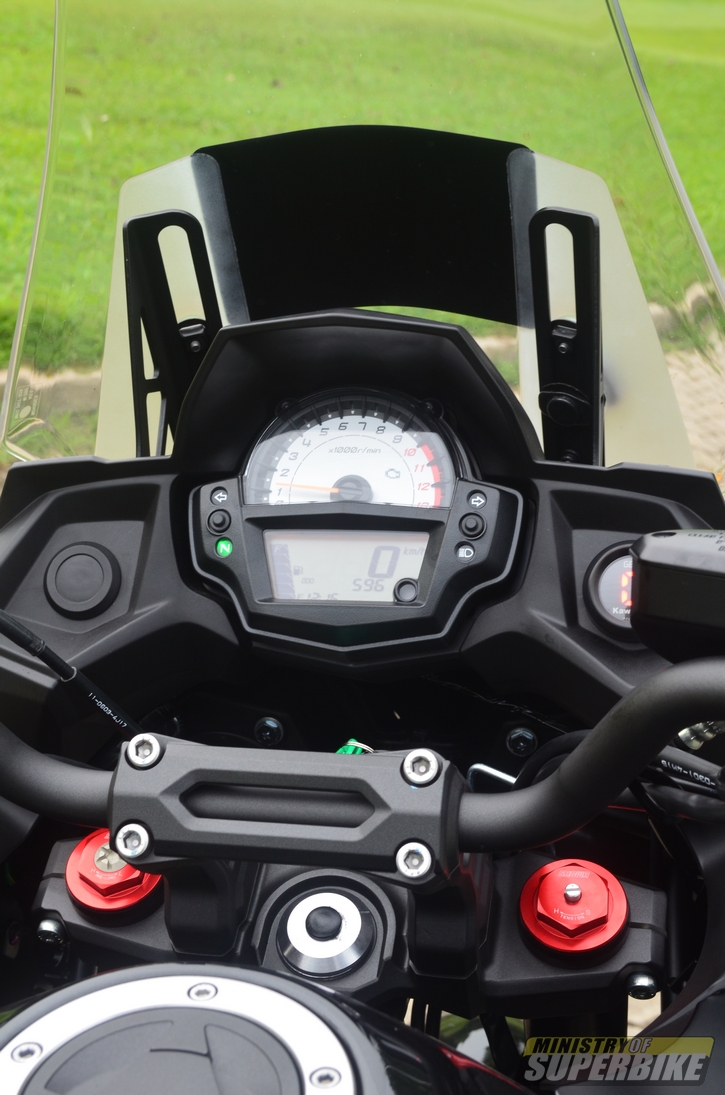
No bike upgrade is complete without improving the suspension. Suspensions itself is one major factor that can make or break a bike. New for 2015 Versys is Showa separate function fork. Originally on previous Versys, the forks are adjustable for preload on both forks while rebound damping on the right fork leg. This new Showa forks on the other hand, had preload adjustment on the right fork leg, and rebound damping is now located on the left fork leg. While I am unable to make adjustments to the forks prior to test ride session, I am impressed with how the front suspension worked flawlessly and able to soak up road unevenness without transferring the full force of bumps and dips against the rider. On a few occasions where I had tried full lock braking, the fork did not bottom out. Hadn’t I mention about confidence in late braking just now? Yes it is that good. While highways are not the strongest point of Versys, its handling is evidently top notch, easily hounding and chasing bigger, sportier bikes when ridden on federal routes. Favourite riding route such as Fraser’s and Kuala Klawang comes to mind.

Meanwhile the rear shock is a new Kayaba rear shock with hydraulic preload adjuster. In previous Versys, adjusting the rear shock preload requires the supplied hook spanner, and in case one needs to change its preload setting in the midst of riding, one would have to bring along the tool. With the hydraulic adjuster, changing preload is a cinch now. Easy to add or reduce preload on the fly as riding condition changes –carrying pillion, carrying loaded panniers and top box, riding on paved road or loose gravel, just twist the mounted adjuster clockwise or anti-clockwise and the amount of preload applied can be counted with clicks with each subsequent twists.
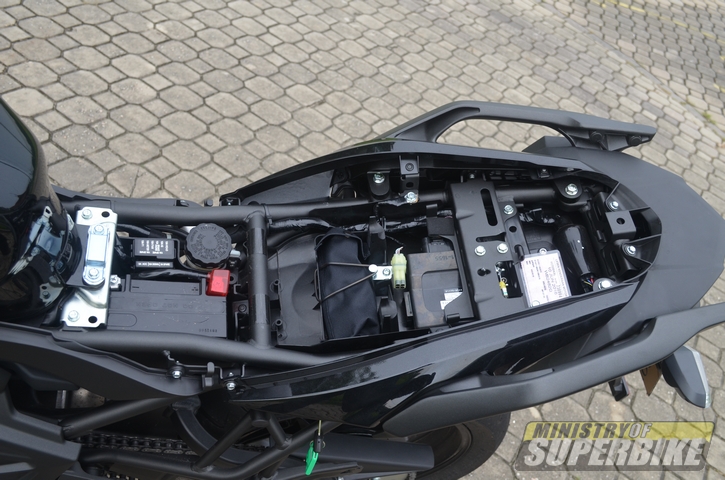
Kawasaki already has in mind to cater the Versys for riders who goes travelling far and will be carrying extra load such as luggage, camps and not to forget an accompanying pillion! On top of easy preload tuning, Kawasaki has also redesigned its rear subframe support that carries the rider’s, pillion’s and luggage weight, to accommodate much heavier weight compared to previous subframe. At the same time Kawasaki incorporated its own pannier locking mount, cleverly designed to to blend into the pillion grab bar and foot peg. Kawasaki’s official side panniers for the 2015 Versys is available for order from Kawasaki Malaysia. As of now there is no aftermarket panniers and box mounting from other brands.

After this test ride, I can say that Kawasaki has again came out with a winner. Taking a capable bike and improving it further is no easy task, although personally I would love to have this version of Versys to be introduced much earlier. While the improvements will not entice current owners to switch, but it is a very interesting and solid proposition for riders looking to upgrade from smaller bikes, and will remain a bike that will be kept and ridden for quite some time.












